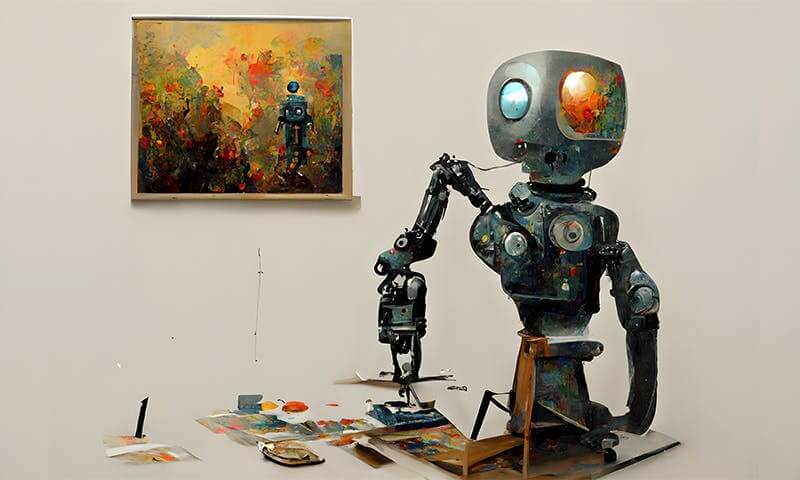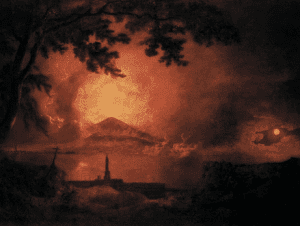AI has gotten better quickly in the past few years. This has changed many industries and made people think differently about creativity. As AI technologies keep getting better, people are worried that they might take over the jobs of human artists. In this detailed blog post, we explore how AI and art intersect. We will look at the benefits, drawbacks, and ethical concerns of artwork created by AI.
AI in Art
Machine Learning and Generative Models: AI programmes, especially those using machine learning and generative models, have made great progress in analysing large amounts of information, identifying patterns, and creating art that imitates human creativity.
Some examples of art created by AI are DeepDream and AIVA. DeepDream makes strange and dreamlike pictures using neural networks, while AIVA is an AI composer that creates new pieces of music. These new ideas demonstrate how AI can help artists create even more amazing works of art.
Advantages and limitations of artificial intelligence in art.
AI can quickly create new artwork by analysing large amounts of artistic data, making it efficient and speedy. Being efficient is really helpful in fields such as graphic design or advertising because it helps to get things done quickly. This is important because time is very valuable in these industries.
Discovering Different Art Styles
AI programmes can try out new ways of creating art, such as using unique techniques and ideas that human artists may not have thought of. Trying out different styles can result in new and creative ways of making art.
One major drawback of artwork created by AI is that it doesn’t have emotional context or subjective experiences. Artists who are human add their own viewpoints, feelings, and cultural upbringings to their works, giving them more complexity and individual significance.
AI-generated art brings up concerns about whether it is truly original and authentic. AI can create impressive imitations, but it doesn’t have the same life experiences and natural decision-making abilities that humans use to make artistic choices.
Working Together
Human and AI:
Helping Humans Be More Creative: Many artists and creative professionals are using AI as a tool to improve their creative processes instead of seeing it as a danger. Artificial intelligence can help artists come up with ideas, give advice, and do tasks that are done over and over again. This lets artists concentrate on the important and creative parts of their work.
When humans and AI work together, they can have a conversation and give each other suggestions. This helps artists and machines work better together. Artists can work with AI algorithms to make their creations better. This partnership combines human creativity with AI’s ability to process data.
Ethical concerns and potential outcomes in the future:
Ownership and Attribution:
The issue of who owns artwork created by AI and who deserves recognition for it presents ethical challenges. As AI-generated art becomes more popular, it will be more important to deal with issues like attribution, copyright, and intellectual property rights.
AI’s impact on culture and society is a worry because it can copy and increase current cultural biases and stereotypes. Making sure that AI-created art shows different viewpoints and doesn’t continue harmful stories needs moral guidelines and thoughtful selection.
The role of artists might change as AI technologies get better. Artists can do more than just make art. They can also work with AI, choose AI-made art, or think about how AI affects art and society.
In conclusion, the rapid progress of AI has caused excitement and worry among artists. AI-generated art is interesting and challenges traditional ideas about creativity, but it probably won’t completely replace human artists. AI can help enhance human creativity, make it easier to create new forms of art, and encourage discussions about how art and technology are changing over time.
By keeping a careful and moral perspective, we can influence the direction of art in the future. This will ensure that human imagination can thrive even as AI becomes more prevalent.
Recommend0 recommendationsPublished in Blogs





Responses